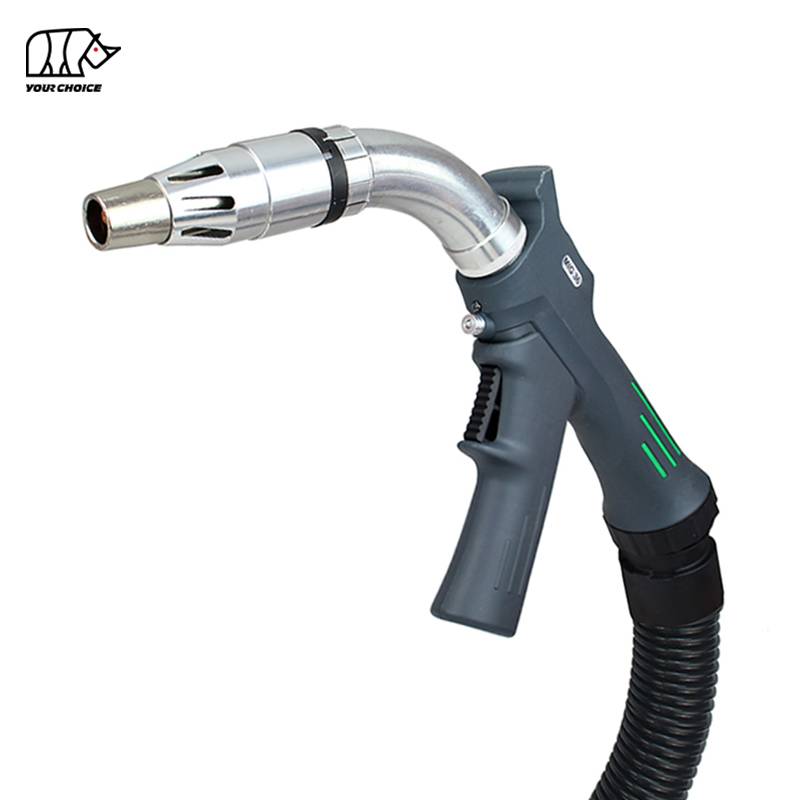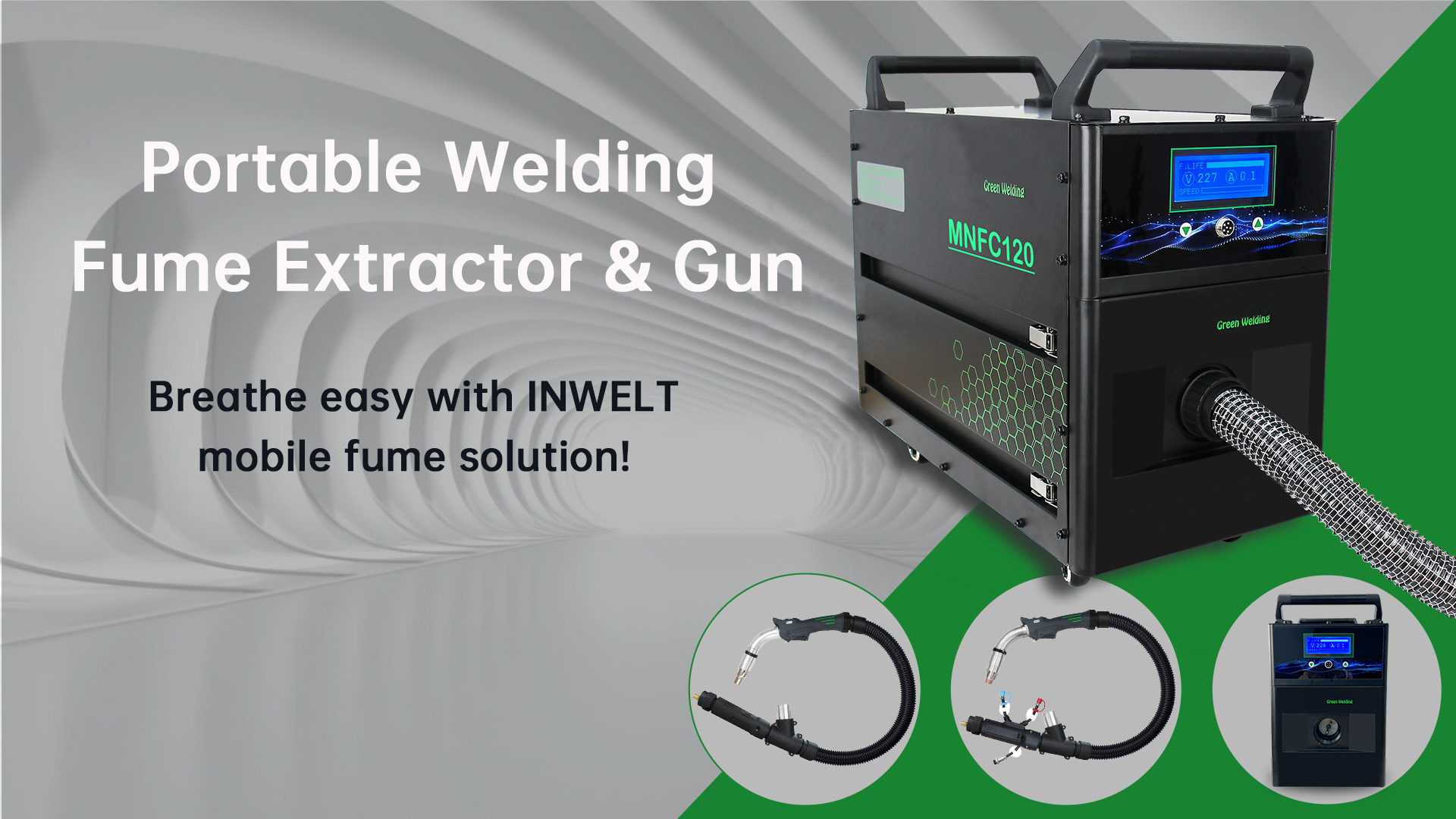Welding is the backbone of modern fabrication and construction, a skilled trade that builds our world. Yet, behind the brilliant arc and the molten metal lies a silent, pervasive danger: welding fumes. These are not merely a nuisance or "part of the job." They are a complex mixture of metallic oxides, silicates, and fluorides that pose a severe and documented threat to human health.
Ignoring welding fume extraction is no longer an option. With growing regulatory scrutiny and a deeper understanding of occupational health, implementing a robust fume control strategy is a legal, ethical, and financial imperative. This ultimate guide will delve deep into the why and how of welding fume extraction safety, providing you with the knowledge to build a safer, more productive, and compliant workplace.
Why Welding Fume Extraction is Non-Negotiable: The Invisible Hazard
Before we discuss the solutions, it's crucial to understand the gravity of the problem. Welding fumes are a complex aerosol of fine particulate matter and gases generated when metals are heated above their boiling point.
The Composition of Welding Fumes: A Toxic Cocktail
The specific composition of welding fumes depends on the base metal, filler materials, coatings, and the welding process itself. However, common hazardous elements include:
Hexavalent Chromium (Cr(VI)): A known human carcinogen, primarily generated when welding stainless steel or materials with chromium coatings. It can cause lung cancer, asthma, and damage to the nasal passages and skin.
Manganese (Mn): Present in most steel and many welding wires. Overexposure can lead to manganism, a severe neurological disorder with symptoms similar to Parkinson's disease, including tremors, slurred speech, and balance issues.
Iron Oxide: While the body can handle some iron, excessive inhalation of iron oxide particles can cause siderosis, a form of lung disease, and act as an irritant to the respiratory system.
Nickel, Copper, and Cobalt: These metals can cause respiratory irritation, allergic reactions (especially nickel), and, in some cases, are suspected carcinogens.
Aluminum Oxide and Zinc Oxide: Inhalation of zinc oxide fumes can cause "metal fume fever," a flu-like illness, while aluminum can be a respiratory irritant.
Shielding Gases: Gases like argon, helium, and carbon dioxide can displace oxygen in confined spaces, leading to asphyxiation.
The Dire Health Consequences of Fume Inhalation
The microscopic size of welding fume particles (often less than 1 micron) allows them to bypass the body's natural respiratory defenses and penetrate deep into the alveoli of the lungs, entering the bloodstream. The health effects are both acute and chronic.
Short-Term (Acute) Health Effects
Metal Fume Fever: Characterized by chills, thirst, fever, muscle ache, and chest soreness, typically occurring 4-12 hours after exposure.
Eye, Nose, and Throat Irritation: Immediate burning sensation, dryness, and soreness.
Nausea and Dizziness: Often a result of exposure to ozone or carbon monoxide generated during welding.
Bronchitis and Pneumonia: Increased susceptibility to respiratory infections.
Long-Term (Chronic) Health Effects
Lung Cancer: The International Agency for Research on Cancer (IARC) has classified welding fumes as "carcinogenic to humans" (Group 1).
Neurological Damage: Chronic manganese exposure leads to irreversible manganism.
Kidney Damage: Certain metals, like cadmium, can accumulate and damage the kidneys.
Stomach Problems: Swallowing particles cleared from the respiratory system can lead to gastrointestinal issues.
Respiratory Diseases: Including chronic obstructive pulmonary disease (COPD), asthma, and scarring of the lungs (pulmonary fibrosis).
Reproductive Harm: Some components can affect fertility and fetal development.
The Business Case: Legal, Financial, and Ethical Imperatives
Beyond the human cost, failing to control welding fumes has serious consequences for your business.
Regulatory Compliance: Agencies like OSHA (Occupational Safety and Health Administration) in the U.S., HSE (Health and Safety Executive) in the UK, and similar bodies worldwide have established strict Permissible Exposure Limits (PELs) for components of welding fumes. Non-compliance can result in hefty fines, work stoppages, and even criminal charges.
Reduced Productivity: A sick worker is an absent worker. Respiratory illnesses, cancer, and neurological disorders lead to increased absenteeism, higher healthcare costs, and a loss of skilled labor.
Workers' Compensation and Liability: Failure to provide a safe workplace makes a company liable for workers' compensation claims and potential lawsuits, which can be financially devastating.
Employee Morale and Retention: A company that visibly invests in employee safety fosters loyalty, attracts top talent, and reduces turnover. Skilled welders are in high demand and will choose employers who prioritize their well-being.
Building Your Defense: A Comprehensive Guide to Fume Extraction Systems
A safe welding environment is achieved through a combination of engineering controls, work practices, and personal protective equipment (PPE), with engineering controls being the first and most critical line of defense.
Source Capture: The Gold Standard in Fume Control
Source capture, or local exhaust ventilation (LEV), is the most effective method because it captures fumes right at the point of generation, before they can enter the welder's breathing zone or spread through the workshop.
Fume Extraction Guns
These are integrated MIG/MAG welding guns with a built-in extraction nozzle that surrounds the welding arc. They are highly efficient for larger, automated, or robotic welding applications where the gun path is predictable.
H3: On-Torch Extraction
Similar to extraction guns but often designed as an attachment for standard torches, particularly in TIG welding where a separate nozzle is used.


Flexible Extraction Arms
These are the most common and versatile source capture devices. They consist of a hollow, articulated arm (typically 10-20 feet long) with a capture hood at the end. The welder positions the hood close to the weld point.
Pros: Highly flexible, easy to reposition, suitable for a wide variety of welding tasks.
Cons: Requires active participation from the welder to position correctly; can sometimes be in the way.
Downdraft Benches and Tables
These are work surfaces with a perforated top and a built-in extraction system that pulls fumes downward, away from the welder's face. They are excellent for smaller, bench-top work.
Ambient Air Filtration: Cleaning the Entire Workshop
For situations where source capture is impractical (e.g., welding on very large structures like ships or bridges), or as a secondary measure to clean general workshop air, ambient systems are used.
Smoke Extractors / Air Purifiers: These are free-standing units with high-efficiency filters that draw in contaminated air, clean it, and recirculate it back into the room. They reduce the overall background fume concentration.
Ceiling-Mounted Filter Banks: Large, powerful filtration units mounted at a high level that create a controlled airflow pattern, pushing clean air down and pulling contaminated air up to be filtered.
Pros: Captures fumes from all processes in the area; good for supplementary control.
Cons: Does not protect the welder from breathing zone exposure; should not be used as the sole means of protection.
The Heart of the System: Choosing the Right Fume Extractor Unit
The capture device (arm, gun, etc.) is only as good as the unit powering it. Key considerations include:
Airflow and Vacuum (Static Pressure): The unit must have sufficient power to pull air through the entire system—hoses, arms, and filters—at the required flow rate. Longer arms and finer filters require more powerful motors.
Filtration Levels:
Primary Filter: Captures larger sparks and particles to protect the main filter.
Main HEPA/EPA Filter: A High-Efficiency Particulate Air (HEPA) or Efficient Particulate Air (EPA) filter is essential. A HEPA filter captures at least 99.97% of particles at 0.3 microns, which is critical for trapping the most dangerous fume particles.
Gas Phase Filter (Optional): For processes that generate significant ozone or other gases, an activated carbon filter can be added to absorb them.
Self-Cleaning Mechanisms: Some industrial units have automatic filter cleaning systems (e.g., reverse pulse jet) that extend filter life and maintain consistent performance.
Portability vs. Centralized Systems:
Portable Units: Ideal for job shops or facilities where welding stations change frequently.
Centralized Systems: One powerful extractor serves multiple welding stations via a ducted network. This is the most efficient solution for large, fixed workshops with many welders.
Implementing and Maintaining an Effective Safety Program
Purchasing the right equipment is only half the battle. A successful safety program requires diligent implementation and maintenance.
The Hierarchy of Controls: A Systematic Approach
Follow this recognized framework to ensure you are using the most effective methods first.
Elimination/Substitution: Can you use a process that generates fewer fumes (e.g., laser welding instead of arc welding)? Can you use materials with lower manganese content?
Engineering Controls: This is where fume extraction systems reside. They are designed to remove the hazard at the source.
Administrative Controls: Implement safe work practices. This includes training, scheduling to reduce exposure time, and posting warning signs.
Personal Protective Equipment (PPE): This is the last line of defense. When engineering controls cannot eliminate the risk, appropriate respiratory protective equipment (RPE) must be used.
The Critical Role of Respiratory Protective Equipment (RPE)
Even with the best extraction system, there may be situations where RPE is necessary:
During setup or when extraction is not feasible.
As a backup in case of extraction system failure.
When working in confined spaces.
The correct type of RPE must be selected based on a risk assessment, ranging from disposable filtering facepiece respirators (FFPs) to powered air-purifying respirators (PAPRs) with welding helmets.
Maintenance: The Key to Long-Term Performance
An extraction system that isn't maintained is a false security.
Filter Replacement: Clogged filters drastically reduce airflow and efficiency. Monitor the pressure gauge on your unit and replace filters as recommended by the manufacturer.
Regular Inspections: Check extraction arms for damage, ensure hoses are not kinked, and inspect hoods for blockages daily.
LEV Thorough Examination and Testing (TExT): In many regions, it is a legal requirement to have your Local Exhaust Ventilation system professionally tested and examined at least every 14 months (as per HSE guidelines in the UK). This ensures it is still performing to its original design specifications.
Training and Creating a Culture of Safety
Technology is useless without proper human implementation.
Hazard Awareness Training: Welders must understand why fume extraction is critical. Show them the data on health risks.
Hands-On Equipment Training: Train every welder on how to correctly position extraction arms and hoods (the "capture zone" is typically within 6-12 inches of the arc). Teach them how to check for proper airflow.
Empowerment: Encourage welders to report any issues with extraction equipment immediately. They are the first line of defense.
Conclusion: Breathe Easy, Weld Safely
The science is unequivocal: uncontrolled welding fumes are a lethal hazard. The days of dismissing the smoky haze as an unavoidable part of welding are over. By investing in a well-designed, properly maintained welding fume extraction system, you are doing more than just complying with the law.
You are investing in your most valuable asset: your people. You are safeguarding their health, their futures, and their families. You are protecting your business from crippling liabilities and ensuring its long-term sustainability and reputation.
A safe workshop is a productive, efficient, and morally sound workshop. Don't wait for a health crisis or a regulatory citation to act. Assess your risks, choose the right engineering controls, implement a rigorous safety program, and commit to a future where every breath your welders take is a safe one.

English
简体中文
العربية
Français
Русский
Español
Português
Deutsch
italiano
日本語
한국어
Nederlands
Tiếng Việt
ไทย
Polski
Türkçe
ភាសាខ្មែរ
Bahasa Melayu
Filipino
Bahasa Indonesia
magyar
Română
Čeština
Монгол
қазақ
Српски
हिन्दी
فارسی
Slovenčina
Slovenščina
Norsk
Svenska
українська
Ελληνικά
Suomi
Latine
Dansk
বাংলা
Hrvatski
Afrikaans
Gaeilge
Eesti keel
नेपाली
Oʻzbekcha
latviešu
Azərbaycan dili
Беларуская мова
Bosanski
Български
ქართული
Lietuvių













